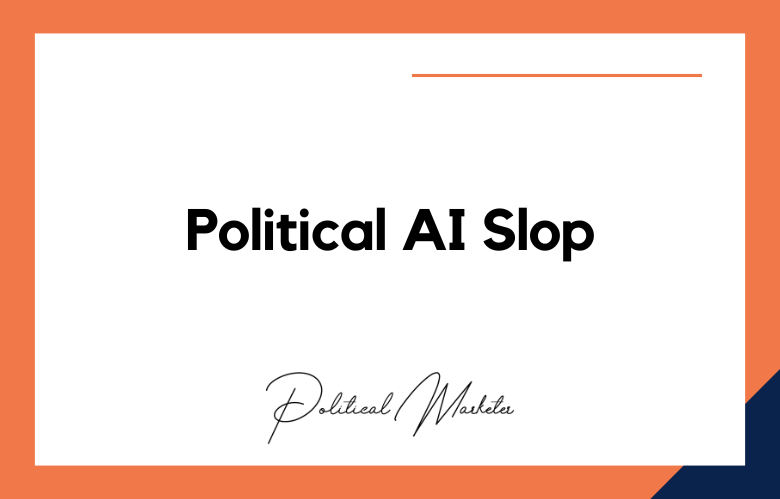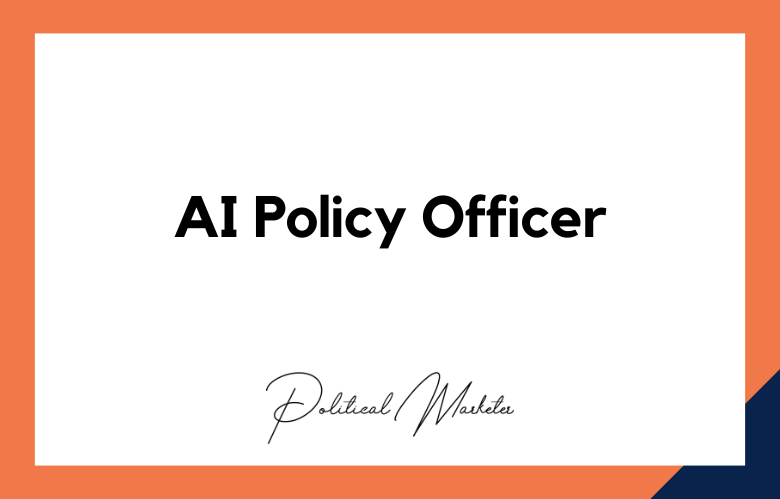In a world where data is becoming increasingly important, political campaigns have turned to data analytics to understand and predict voter behavior. These techniques help campaigns tailor their messaging and reach their target audience effectively. Post, we will explore the most effective data analytics techniques to predict voter behavior and how they have revolutionized the political campaign game.
What Data Analytics Techniques Can Best Predict Voter Behavior?
Predictive Modeling
Predictive modeling uses statistical algorithms to analyze past voting patterns and determine the probability of a potential voter supporting one candidate. By analyzing factors such as age, gender, past voting history, and education level, campaigns can target potential supporters more effectively. This technique has been increasingly popular in recent years and has been used for everything from predicting voting turnout to predicting the outcomes of elections.
Social Media Monitoring
With the rise of social media, campaigns have begun to monitor social media sites to gain insights into voter behavior. By analyzing tweets, Facebook posts, and other social media data, campaigns can establish trends and patterns in voter behavior. This data can then be processed and used to improve targeting and messaging. Social media monitoring has been used successfully in numerous political campaigns to better understand the public’s view on political issues.
Big Data Analytics
Big data analytics analyzes vast amounts of data to identify patterns and trends. By analyzing data sets ranging from voter registration to Census data, campaigns can gain insights into voter behavior and preferences. They can also use machine learning algorithms to predict voting patterns more accurately. This technique was used successfully in the 2016 US Presidential Election by the Trump campaign, which used big data analytics to identify potential swing states to target.
Sentiment Analysis
Sentiment analysis is the process of analyzing text data to determine the sentiment or opinion of the writer. By analyzing news articles, tweets, and other forms of text data, campaigns can determine the public’s view on political issues. This technique has been used to identify hot-button issues and tailor messaging to address those issues. It has been used in numerous political campaigns to gain insights into voter sentiment.
Location-Based Analytics
Location-based analytics is analyzing geospatial data to gain insights into voter behavior. By analyzing voter registration, campaign events, and polling data, campaigns can determine which geographic regions are most likely to support their candidate strongly. This allows them to target these areas more effectively and create messaging that resonates with voters.
Decoding Democracy: Unlocking Voter Behavior with Data Analytics
With an ever-expanding pool of data available to us in the digital age, data analytics has become increasingly prevalent in nearly every aspect of our lives. One area in which its influence has become significant is politics, where data analytics offers a powerful tool for understanding voter behavior and unlocking the mysteries of democracy.
At its core, data analytics is the process of extracting insights from large sets of data, and it has proven to be an invaluable resource for political campaigns looking to understand their supporters and better target their outreach efforts. With the help of sophisticated algorithms and machine learning techniques, data scientists can analyze everything from voter demographics to online browsing behavior to gain a deeper understanding of what motivates people to vote a certain way.
The Crystal Ball of Voting: Advanced Data Analytics Techniques
Elections are the cornerstone of a democratic system, and every vote counts. Therefore, predictive analysis plays a vital role in shaping the outcome of any election.
With recent advancements in technology, political campaigns have access to unprecedented data that can be harnessed to predict voter behaviors, preferences, and turnout. We will explore advanced data analytics techniques used to predict voting outcomes, understand voter behavior, and analyze the effectiveness of political campaigns.
Voter Behavior Analysis:
Political campaigns collect data from traditional surveys, phone calls, and door-to-door canvassing to understand voting patterns and create predictive models. Predictive polling, a method that uses machine learning algorithms to extrapolate survey data, can identify the potential swing voters and map demographic trends. Moreover, sentiment analysis of social media platforms enables campaigns to understand how people feel about particular issues or candidates and tailor their messaging accordingly.
Voter Turnout Prediction:
Voter turnout prediction is crucial for any political campaign as it helps prioritize resources and focus on areas with higher voter turnout. Advanced analytics techniques, such as geospatial analysis, machine learning, and historical election data, can predict the voter turnout rate in specific regions. By indicating which areas have higher voter turnout rates, campaigns can use targeted messaging and even offer transport to encourage voters to the polling stations.
Microtargeting:
Microtargeting is a technique used by political campaigns to reach out to specific voters with tailored messages. It is used to persuade undecided voters, motivate loyal supporters, and mobilize those who may not vote.
Microtargeting relies on data analytics, such as predictive modeling and behavioral analysis, to identify specific groups of people based on age, gender, race, income, and voting history. With the help of microtargeting, political campaigns can deliver personalized messaging to voters at the right time and place, boosting the likelihood of a positive response.
Campaign Effectiveness Analysis:
Campaign effectiveness analysis measures how well political campaigns connect with voters and motivate them to vote. To analyze the effectiveness of a campaign, political campaigns use techniques such as A/B testing, survey feedback, and sentiment analysis.
A/B testing involves testing two variations of the same message to determine which is more effective. Survey feedback and sentiment analysis are helpful for campaigns to gauge public perception and fine-tune their messaging.
Data Privacy:
While data analytics can help determine voting outcomes, advanced techniques come with ethical concerns about data privacy and security. Political campaigns must be mindful of the information they collect, how they use it, and how they safeguard it. Campaigns should be transparent with voters about the data they are collecting and what they plan to do with it while ensuring that cybersecurity policies are robust.
Votes in the Numbers: How Data Analytics Predict Voter Behavior
In today’s world, technology has revolutionized the way we approach and analyze voter behavior. Decoding Democracy: Unlocking Voter Behavior with Data Analytics has become integral to understanding and predicting election outcomes. This entails using advanced data analytics to study voters’ preferences and patterns to create targeted campaigns for election candidates.
When combined with traditional campaigning methods, data analytics can lead to an effective campaign strategy capable of swaying voters’ opinions and determining who takes office.
Data analysts can determine which policies and messages resonate most with each group by analyzing voters’ demographics, social media, and online activities. This information can then be used to craft targeted messaging and advertising for specific demographics, increasing the likelihood of garnering votes from those groups.
Conclusion:
Data analytics has become an integral part of modern political campaigns. By analyzing vast amounts of data, campaigns can gain deep insights into voter behavior and preferences. As we have shown, campaign teams use various data analytics techniques to predict voter behavior.
Predictive modeling, social media monitoring, big data analytics, sentiment analysis, and location-based analytics are crucial in political campaigns. With these techniques, political campaigns can develop targeted messaging that resonates with voters, ultimately improving their chances of success.
Call: +91 9848321284
Email: [email protected]
What Data Analytics Techniques Can Best Predict Voter Behavior: FAQs
What is voter behavior analytics?
Voter behavior analytics involves using data science and statistical techniques to understand and predict how individuals or groups are likely to vote based on past behaviors, demographics, and sentiment.
Which data sources are most helpful in predicting voter behavior?
Key sources include voter rolls, polling data, social media activity, demographic databases, geolocation data, and historical election results.
How does machine learning help in voter prediction?
Machine learning algorithms analyze patterns in large datasets to classify, cluster, and forecast voter preferences, turnout likelihood, and issue-based alignments.
What is predictive modeling in political campaigns?
Predictive modeling uses statistical techniques to forecast future voting behavior, identifying swing voters, likely supporters, and key turnout drivers.
How is regression analysis used in political analytics?
Regression helps measure how variables like age, income, or education level correlate with voting choices, enabling campaigns to target more precisely.
What is sentiment analysis in the context of elections?
Sentiment analysis deciphers public opinion from social media posts, news coverage, and online discussions to gauge emotional tone and candidate perception.
Can social media behavior indicate voting intention?
Yes. Likes, shares, hashtags, and engagement metrics provide insights into political leanings and potential support levels.
What role does clustering play in voter segmentation?
Clustering groups voters with similar characteristics (e.g., values, location, behavior) to create tailored outreach strategies for each cluster.
How accurate are data-driven voter predictions?
Accuracy depends on data quality, model sophistication, and real-time updates, but advanced analytics often outperform traditional polling.
What is microtargeting in voter outreach?
Microtargeting uses granular data to deliver personalized messages to small segments based on their behaviors, interests, and voting likelyhood.
How can data analytics boost voter turnout?
Identify low-propensity voters and engage them with customized messages that address personal motivations and remove barriers to voting.
What are lookalike audiences in political marketing?
These modeled audiences resemble known supporters, helping campaigns expand reach to similar demographics or psychographics.
Can natural language processing (NLP) help analyze voter data?
Yes. NLP processes unstructured text data—like speeches, comments, and posts—to extract themes, sentiment, and intent from voter dialogue.
What is A/B testing in political messaging?
A/B testing compares two versions of a message or ad to see which performs better in engagement, conversion, or persuasion.
How do geographic information systems (GIS) aid voter prediction?
GIS visualizes voting behavior spatially, helping campaigns identify hotspots, swing districts, and areas for ground-level mobilization.
Can past voting records be used for predictions?
Yes. Historical voting data reveals patterns that can guide targeting decisions when combined with demographic and behavioral data.
What is the role of real-time data in campaign strategy?
Real-time data allows for rapid feedback and campaign adjustments, improving responsiveness to voter concerns and news cycles.
Are privacy concerns associated with voter data analytics?
Yes. To avoid backlash, campaigns must comply with data protection laws (e.g., GDPR, CCPA) and ensure the ethical use of personal data.
How do campaigns measure the effectiveness of data-driven targeting?
Through conversion tracking, polling shifts, turnout rates, and engagement metrics across targeted segments.
What skills are needed to perform voter behavior analytics?
Key skills include statistics, machine learning, data visualization, political science knowledge, and tools like Python, R, and Tableau.










